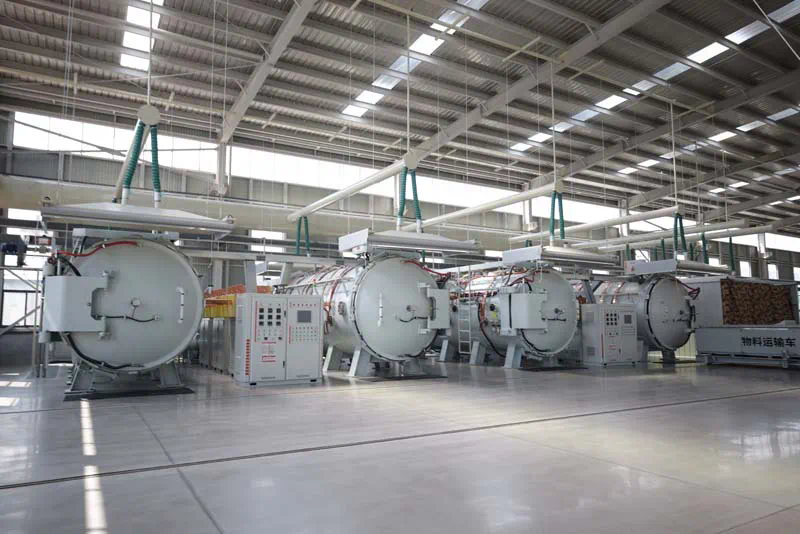The Spark Test is a crucial procedure for ensuring the safety and reliability of glass-lined reactors. These reactors are widely used in the chemical, pharmaceutical, and food industries due to their excellent resistance to corrosive substances and high temperatures. This article delves into the importance of the spark test, providing a comprehensive, detailed, and professional examination of its role in maintaining the integrity of glass-lined reactors.
Understanding Glass-Lined Reactors
Glass-lined reactors are vessels coated with a layer of vitreous enamel, which is a form of glass. This lining offers superior chemical resistance, making it ideal for reactions involving corrosive substances. The glass lining protects the underlying metal structure from chemical attack and high temperatures, thereby extending the life of the reactor and ensuring that reactions are carried out in a safe environment.
The Purpose of the Spark Test
The spark test, also known as the high-voltage test or electrical spark test, is a diagnostic procedure used to detect defects in the glass lining of reactors. It involves applying a high-voltage electrical current to the surface of the glass lining to identify any areas where the insulation properties have been compromised. This test is essential for ensuring that the glass lining is intact and functioning correctly, which is vital for the safe operation of the reactor.
How the Spark Test Works
During the spark test, an electrode is placed on the glass-lined surface, and a high-voltage current is applied. The voltage is gradually increased until a spark is observed, indicating that there is a breach in the glass lining. The location and intensity of the spark can help identify specific areas of concern, allowing for targeted repairs.
Preparation for the Spark Test
Before conducting a spark test, it is crucial to prepare the reactor properly. This preparation includes:
1. Cleaning the Reactor: The surface of the glass lining must be clean and free from any contaminants that could affect the accuracy of the test.
2. Drying: The reactor should be thoroughly dried to prevent any false readings caused by moisture.
3. Inspection: A visual inspection should be carried out to check for any obvious signs of damage or wear before the spark test is performed.
Benefits of Conducting Spark Tests
1. Ensures Safety: By identifying defects in the glass lining, the spark test helps prevent potential failures that could lead to hazardous chemical leaks or reactions. Ensuring the integrity of the glass lining is crucial for maintaining a safe working environment.
2. Prevents Downtime: Detecting and addressing issues with the glass lining early can prevent spark test for glass lined reactor unplanned downtime. This proactive approach helps maintain continuous operation and minimizes disruptions to production schedules.
3. Enhances Longevity: Regular spark testing and timely maintenance extend the life of the reactor. By addressing issues promptly, the reactor can continue to operate efficiently and safely over a longer period.
4. Compliance: Many industries have stringent regulations regarding equipment safety. Regular spark testing helps ensure compliance with these regulations, avoiding potential legal and financial repercussions.

Interpreting Spark Test Results
The results of a spark test can provide valuable insights into the condition of the glass lining:
– No Spark: If no spark is observed, it generally indicates that the glass lining is intact and functioning correctly. However, it is still important to monitor the reactor regularly to ensure continued safety.
– Minor Sparks: Small, localized sparks may suggest minor defects or wear. These should be addressed promptly to prevent further deterioration.
– Major Sparks: Large or multiple sparks indicate significant damage or failure in the glass lining. Immediate repairs or replacement may be necessary to ensure the reactor’s safety and functionality.
Common Issues Detected by the Spark Test
1. Cracks: Over time, cracks can develop in the glass lining due to thermal stress or mechanical impact. These cracks can lead to chemical leaks and reactor failure.
2. Chips: Chips or dents in the glass lining can expose the underlying metal to corrosive substances, compromising the reactor’s safety and efficiency.
3. Delamination: Delamination occurs when the glass lining begins to separate from the metal substrate. This can lead to significant issues if not addressed promptly.

Repairing Glass-Lined Reactors
If defects are detected during the spark test, repairs are necessary to restore the reactor’s integrity. Repair methods vary depending on the extent and nature of the damage:
– Patch Repairs: Minor defects can often be repaired using glass enamel patches. These patches are applied to the damaged area and then cured to form a protective layer.
– Re-lining: For more extensive damage, it may be necessary to re-line the reactor with a new layer of glass enamel. This involves removing the old lining, preparing the surface, and applying a new glass coating.
– Reconstruction: In severe cases, significant portions of the reactor may need to be reconstructed. This is a more extensive process that involves both removing and replacing damaged sections.
Maintenance Practices to Prevent Damage
Regular maintenance is key to preventing damage to the glass lining and ensuring the longevity of the reactor:
1. Routine Inspections: Regular visual inspections can help identify potential issues before they become serious problems.
2. Cleaning Protocols: Adhering to proper cleaning protocols prevents the buildup of corrosive substances that can damage the glass lining.
3. Temperature Management: Proper temperature management helps prevent thermal stress and reduces the risk of cracks and other damage.
4. Operator Training: Ensuring that operators are well-trained in the handling and operation of glass-lined reactors helps prevent accidental damage.
Industry Standards and Regulations
Many industries have specific standards and regulations governing the use and maintenance of glass-lined reactors. Adhering to these standards is essential for ensuring safety and compliance. For instance:
– ASME: The American Society of Mechanical Engineers (ASME) provides guidelines for the design, inspection, and maintenance of pressure vessels, including glass-lined reactors.

– FDA: The U.S. Food and Drug Administration (FDA) regulates the use of glass-lined reactors in the pharmaceutical industry, ensuring that they meet safety and quality standards.
– ISO: The International Organization for Standardization (ISO) sets standards for quality management and safety in various industries, including those using glass-lined reactors.
The Future of Spark Testing
As technology advances, the methods and tools used for spark testing are also evolving. Innovations such as digital testing equipment and automated inspection systems offer greater accuracy and efficiency in detecting defects. These advancements are likely to enhance the effectiveness of spark tests and contribute to improved safety and reliability in glass-lined reactors.
Conclusion
The spark test is a fundamental procedure for ensuring the safety, reliability, and longevity of glass-lined reactors. By detecting defects in the glass lining, the spark test helps prevent potential failures and maintains the integrity of the reactor. Regular testing, combined with proper maintenance practices and adherence to industry standards, ensures that glass-lined reactors continue to operate efficiently and safely.
Understanding the importance of the spark test and implementing best practices for testing and maintenance can significantly impact the operational success and safety of glass-lined reactors. As industries continue to rely on these reactors for various applications, maintaining a robust testing and maintenance program will remain essential for achieving optimal performance and safety.
https://smartfactoryinsights.com/


